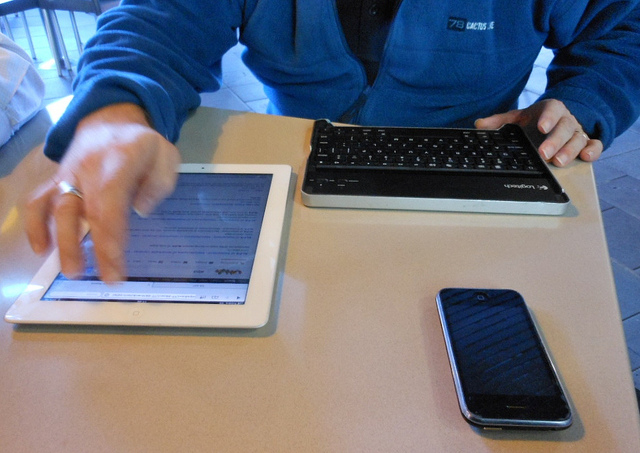I’m not going to bore you with the numbers, because you already know the situation. Mobile devices are ubiquitous in a way that literally no piece of technology ever has been before. Usage statistics are through the roof. Rather than being replaced by other technologies in the future, the myriad uses of mobile devices will likely continue to eclipse many standalone technologies of the not-so-distant past (see: compass, flashlight, pedometer, guitar tuner, the list goes on).
Web developers and advertisers alike see the writing on the wall, and efforts are being disproportionately shifted into the mobile arena. The sharp upward trend is spiking like a newly appearing mountain everyone is scrambling to climb.
On average, we touch our phones about 150 times a day, or once every 6 minutes. We touch our (human) face about 2,000-3,000 times a day. But the times, they are a-changin,’ and that numbers gap will likely continue to shrink. As our devices continue to change, so do we.
In case you haven’t turned on a television in the past three months, the new iPhone is the biggest yet, making it easier to engage more complicated tasks on the go. And while Google Glass is yet to reach widespread availability, scientists have recently diagnosed the first case of Google Glass addiction, which shows just how startlingly fast humans can adapt to and depend on this kind of technology. It literally becomes part of your face, and the patient was said to have been repeatedly reaching involuntary to his temple to use the device when it was no longer on his head.
While new devices are made to be more effortlessly interactive from a physical standpoint, new applications are now designed with a mobile-first mentality instead of being shoehorned into the mobile arena after being originally conceived from a desktop perspective. We are becoming able to do more on our “phones,” including paying bills, ordering food, and meeting strangers. And with the increased speed capabilities and larger size of the screen, these types of tasks are only becoming easier and feeling more natural.
Today, free WiFi is available in many public places (usually with a password), but some cities are moving toward providing universal free wireless. While this may not seem like a smart business idea for Internet providers, it seems likely that free 24/7 internet access for all would be a boon to just about every other conceivable industry, allowing people to access and interact with their products around the clock. This leads us to the future of Mobile Tribes and true ad integration.
To this end, readwrite.com suggests that the emergence of more diverse groups of Mobile Tribes will ensure that “big data will not matter as much as small relationships”. Facebook and Twitter have been at the forefront of facilitating these relationships between companies and their customers since their respective appearances. The Facebook friend with constant political rants? Not in my tribe. The cruise company boasting nightly entertainment and white sand beaches? Not my style, and out of my circle.
The move away from compartmentalized ad time is evident everywhere you look. On TV, ads and programs bleed into one another with hashtags and product placements. On platforms like Google and Facebook, we are constantly being targeted by companies and products we are likely to have an affinity with, based on our browsing and buying history. As the intelligence of these platforms increases, ads are bridging the gap between nuisance and resource.
The platforms of the future will know how to target us so well that we won’t feel targeted at all—we will feel flattered and comforted. And that’s a significant departure from the advertising world of today.
Dylan uses his iPhone as a compass, flashlight, pedometer and guitar tuner.
Image credit: CC by Michael Coghlan




